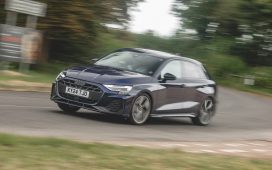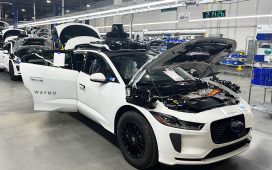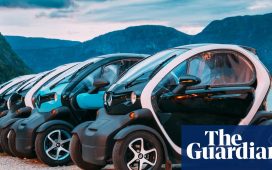Rimac has set 22 absolute world acceleration records for production road-legal cars. The Nevera’s 4-motor battery-electric powertrain generates 1914 electric-equivalent horsepower, and obviously the Boys of Zagreb continue to hone their Launch Control scripting.
To set the records, Rimac returned to the Automotive Testing Papenburg facility in Germany, where they had previously set production-car top speed records. The acceleration runs were performed on the 4-kilometer (2.49-mile) straights of the giant oval. Rimac had two third-party firms on hand to record the performance.
Standing start, the Nevera hit 60 mph in 1.74 seconds. Keep in mind that internal combustion cars like the Bugatti Chiron cover the same sprint in the mid-2-second range. And that great icon of performance that I grew up idolizing, the 427 Shelby Cobra of the mid-1960s, did 0-60 mph in 4.3 seconds—admittedly on the primitive tires of 55 years ago. One must give credit to not only the Rimac scripting and torque vectoring capability, but also Michelin engineers who developed the Cup 2 R tires.
All the recording equipment.
Rimac
As a 21st Century launch control measurable, keep in mind that any acceleration run in the low 3-second range is violent, felt in the gut. I’ve done them plenty of times, and the experience is always as shocking as a body blow. During my first stint in the journalism business in the late 1980s and early ‘90s, a low 4-second 0-60 mph sprint was rare for a production car, and it involved destructive “power shifts” that tore apart clutches, gearboxes, and drivetrain joints.
A list of the speed records set.
Rimac
Rimac also ran the European metric variation on a classic performance test: 0-100-0 kilometers per hour, which is 0-62-0 mph for we Americans. As measured by third-party Dewesoft, the Nevera did the business in 3.99 seconds. Racelogic timed the run at 4.03 seconds. So, for my Shelby pals, keep in mind that the Nevera hit 60 and returned to zero in less time than your 427 Cobra roadster would take to just hit 60 mph.
A much more brutal test was run, 0-400-0 kph (0 to 248 to 0 mph), which was accomplished in 29.93 seconds. I salute the driver much more for his skill braking from such high speed than for the rocket ride to 248. That is some fine footwork.
Rimac also ran the sprint from 0-200-0 kph (0 to 124 to 0 mph) in 8.85 seconds. This is the closest these Eurocentric metric measurables come to the most famous acceleration and braking test of automotive history, the 0-100-0 mph performance of a standard production 427 V8-powered Shelby Cobra of the mid-1960s. With Ken Miles in the car—Christian Bale portrayed Ken Miles in the movie “Ford Vs. Ferrari”—the featherweight 2529-lb. 427 Cobra roadster did the business in 13.8 seconds (again, let’s keep in mind just how primitive those tires were long ago). Look at the difference in time. The Rimac went another 24 mph faster, then braked, and still slashed the time by 4.95 seconds. The advantage of instant torque, launch control scripting, and 21st Century braking paired with regenerative braking from the electric motors. Yeah, technology. Next time, Rimac should put that classic 0-100-0 mph test on the list. I can think of no better way to convince my two old guard pals who worked with Carroll Shelby to stand up and salute.
The Boys (and a Girl) of Zagreb. Job well done.
Rimac
Rimac also proved the “flexibility” of the powertrain with roll-on acceleration runs, a measurable of great importance to anyone who enjoys Midnight Grand Prix on empty highways. Nevera sprinted from 100-200 kph (62 to 124.27 mph) in 2.59 seconds, essentially doubling its speed in two and a half seconds.
Rimac Nevera planview.
Rimac
And to prove the electric motors just don’t quit, they did 200-300 kph (124.27 to 186 mph) in 4.79 seconds, and 200-250 kph (124.27 to 155.34 mph) in 2 seconds flat. Internal combustion supercar and hypercar drivers will find themselves staring at Nevera’s tidy posterior.
These numbers also justify why I have now argued for several years that any serious collector of supercars and hypercars needs at least one battery-electric hypercar in the stable. Yes, yes, we all love the sounds of V12s and twin-turbo V8s. But the Rimac Nevera and its Italian second cousin, the Automobili Pininfarina Battista, will be on the green at Pebble Beach in the future, and will trade for serious cash at auctions in ten years. They have become the twin ultimate measurables of road car acceleration. The two companies collaborated on development of their cars, with feedback loops between Zagreb and Cambiano, and they have a friendly rivalry, setting world speed records. Pininfarina owns the quarter-mile record, but Rimac has thrown down the gauntlet again. For now, the Rimac Nevera is the Atomic Punk of hypercars.









